Founded in 1994, Canadian Sport Institute Calgary (CSI Calgary) is a not-for-profit business that nurtures elite Canadian sportspeople, in collaboration with coaches and sport scientists, to help them achieve their ambitions. Using its state-of-the-art training and testing facilities, CSI Calgary implements advanced technology and analytical tools to measure athletes’ performance and improve their sport-specific skill sets. It aims to boost their fitness and optimize performance for World Cup and Olympic events.
A project in motion
Assisting athletes across multiple sports and disciplines, CSI Calgary started collaborating with eight Olympic luge athletes, all part of the senior national team, 16 years ago.
A common belief among athletes and coaches is that start time is a prerequisite for winning a race. Even once the luge start technique is ‘mastered’, the race sliding component is the one that ultimately determines the race outcome. This can be impacted primarily by the athlete’s driving skills, but also sled design, environmental conditions, and many other factors.
There has been limited research in this area – some suggest that start time performance relies mostly on upper body strength, however the underpinning biomechanical factors that determine start performance had yet to be explored.
The national team luge coach and Pro Stergiou – Business Development Manager at Sport Product Testing – had been in contact since 2010, collaborating on start technique analysis. In the beginning of 2014, Luciano Tomaghelli, an MSc student from the University of Calgary, stepped in to test some of the luge coach’s hypotheses on what affects luge start performance.
In luge, where milliseconds can determine an athlete’s ranking, quality velocity data capture is needed. Timing lights provide limited information – only 2 to 3 data points of the athlete’s performance. Therefore, the research team started to investigate the application of 3D wireless accelerometers mounted under the sled, which provides 1000 data points per second to assess start performance. The team found accelerometers helpful in gaining important information for the athletes for close to four years, but wanted to gain further understanding into the validity of that data.
Motion Analysis Corporation (MAC) technology provided a “gold standard” in collecting a large volume of data over 10 meters of the athlete sliding on a sled. Pro’s first introduction to motion capture technology was during his graduate studies at the University of Calgary in 1993. “Since that time, I have exclusively in my career been using Motion Analysis Corporation technology for 3D motion capture.”
The study consisted of three parts. Firstly, to understand how accurate an accelerometer
was in measuring luge start performance. The second part consisted of gaining insights into the biomechanics of the ‘paddling’ phase, while the third part looked into the forces and technique of the ‘pull’ phase, both of which make up the start in luge.
The paddle phase is where the athletes strike the ice with their hands to increase their speed and achieve the maximal velocity possible before sliding into the track. The pull is where the athletes propel themselves forward using handles – Luciano identified that the pull itself is critical to start performance and impacts almost 80% on starting velocity.
The study took place at two facilities – the ice rink and “The Ice House” at Canada Olympic Park – and MAC technology was used to best deal with challenging conditions such as reflections off of the ice surface. Eight high-speed cameras were also used to collect the kinematic data. Kinematics looks into the geometry of the athlete’s movement without taking into account the forces that make the movement happen (kinetics). Starts were also practiced using instrumented force sensor handles to gain kinetic data.
Powerful motion capture means powerful results
The data validity of the accelerometer was the main concern for the first part of the study. Sled velocity data obtained by the 3D wireless accelerometer attached to the luge was compared to velocity data captured by MAC technology.
Brower timing lights were set up at 1.5 meters, 3.5 meters and 10.5 meters from the handles of the luge, which provided a visual aid to properly calibrate the motion analysis system and capture the desired volume of data alongside the accelerometer readings.
When velocity output from the accelerometer was compared to the velocity output from MAC software, it was found that the accelerometer underestimated sled velocity – an average of 5% between the two was identified. This helped to understand there was a lack of validity in the accelerometer due to this difference being too large.
This is reflected in the graphs below. While Figure 3-10 indicates that there were no discrepancies between the velocity profiles of the accelerometer and the motion capture, Figure 3-11 shows the accelerometer’s inconsistency and validity in tracking sled velocity compared to the MAC software.
The second part concerned the paddle kinematics; the technique behind the paddling phase. The team tried to understand which technique produced a higher or slower velocity output, testing some of the coaches’ original hypotheses.
The MAC system allowed for the collection of kinematic data from the whole upper body, pioneering this type of study with elite luge athletes. Even though the team did not find statistical differences for the hypotheses tested, they were able to identify how start performance can be impacted by a good, or a bad, technique. For instance, if an athlete breaks a wrist and pushes towards the ground instead of pulling to propel themselves forward, there would be no increase in sled velocity.
Thirdly, the team looked into both the kinematics of the pull phase, as well as the kinetics which were obtained by the instrumented force handles. The MAC Cortex software had the capacity to simultaneously take that data and synchronize it to the kinematics obtained from the cameras. Thanks to this, they were able to study how different force-related variables impact sled velocity and pull performance. The most important variable was the relative force to the body mass that each athlete was able to apply.

“We’re competing with the best in the world and it’s because of the work that’s been done in biomechanics and starts,” Pro states. “We’ve made leaps and bounds over the last 15 years with our athletes.”

Pro Stergiou
Business Development Manager at Sport Product Testing
Technology and study can contribute to success
The year-long experiment has progressed the team’s training and performances since, showcasing that motion capture systems can assist in improving the capabilities of elite luge athletes. The athletes mentioned that, while performance can be affected by a whole variety of other factors, start time played a role in their victories.
“We’re competing with the best in the world and it’s because of the work that’s been done in biomechanics and starts,” Pro states. “We’ve made leaps and bounds over the last 15 years with our athletes.”
Truly, the Canadian team went from being the 50th best worldwide, with no luge medals, to being in the top five and getting podium places at the past two Olympic games. “That’s the Cinderella Story of our work with some of our team,” Pro concludes.



























